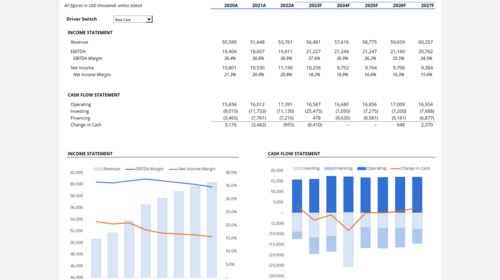How Do Effective Leaders Communicate? Tips for Success
Effective leadership is intrinsically tied to effective communication. Leaders who can skillfully convey their ideas, motivate their teams, and resolve conflicts can inspire their organizations to reach new heights.

Why is Effective Workplace Communication Important?
Effective workplace communication is at the center of any successful organization. There are many compelling reasons why it matters:
- Information Exchange: It allows the sharing of information, ideas, and updates, ensuring everyone is on the same page and has access to the knowledge they need to perform their tasks effectively.
- Team Collaboration: Effective communication promotes collaboration among team members, enhancing their ability to work together, solve problems, and achieve common goals.
- Conflict Resolution: It provides a platform to address conflicts and misunderstandings, helping to maintain a harmonious work environment and fewer workplace conflicts. Poor communication is often the cause of conflict.
- Task Coordination: Communication enables the coordination of tasks and projects. It ensures that activities are sequenced and aligned to meet deadlines and objectives.
- Decision-Making: Decisions are often made collaboratively. Clear communication ensures that all relevant parties are informed and can contribute to the decision-making process.
- Feedback and Improvement: It allows for feedback on performance, leading to personal and organizational improvements. Constructive feedback helps employees grow and learn.
- Employee Engagement: Open and effective communication enhances engagement, job satisfaction, and employee morale. When employees feel heard and valued, they are more likely to be committed to their work.
- Company Culture: Communication plays a significant role in shaping an organization’s culture. The way information is conveyed and how people interact influences the work environment and the company’s values.
- Client and Customer Relations: Good communication extends to external interactions with clients and customers. It ensures that their needs are understood and met, fostering positive relationships.
- Innovation: It encourages the sharing of innovative ideas and solutions. When employees feel comfortable expressing their thoughts, it can lead to creative problem-solving and innovation.
As a leader, the ability to consciously choose our reactions and responses is an essential communication skill. Knowing how to influence and communicate effectively, manage ourselves, and positively impact others can lead to increased employee engagement and morale. It can maximize productivity and the bottom line as well as lead to more cohesive workplace relationships. So why is good communication seen as just a “soft skill?”
Successful businesses recognize the importance of great communication by training leaders in good communication skills, and business leaders whose strong communication skills allow them to connect with team members personally can inspire them to perform at their best.
Recognizing Different Communication Styles
Improving communication in the workplace requires a leader to be able to recognize and adapt their communication to the needs of the individual or team. This requires awareness of the differences between communication styles as well as the ability to be flexible and responsive at the moment.
Knowing the communication preferences and styles of individual team members is as important as knowing their strengths and weaknesses and this knowledge can only be gained through regular interactions and opportunities to get to know team members.
Each person possesses a distinct communication style for exchanging basic information with others. There are four main communication styles: passive, aggressive, passive-aggressive, and assertive.
Passive
This is a communication style where individuals consistently avoid telling you what they think. They evade expressing opinions and feelings which also means they avoid identifying or acknowledging what they need.
Individuals with passive communication styles often suppress their hurt and upset feelings, allowing them to accumulate over time. This emotional buildup can eventually result in outbursts that may seem triggered by minor incidents but are, in fact, the culmination of unresolved emotions. These outbursts can be followed by feelings of shame, guilt, or confusion, further reinforcing their passive behavior. How do you communicate effectively with this individual?
If you are managing an individual who has a tendency towards passive communication, make sure you are observing their actions rather than their words. If they’re telling you their workload is fine, but you’re noticing an increase in mistakes in their work, then there may be a problem. Maybe they need more help in delegating their work or assigning priorities.
Aggressive
Identifying an aggressive communication style is usually straightforward. These individuals often make their presence known even before entering a room. They have a strong desire to be in control or to monopolize conversations. Individuals who use an aggressive communication style are often perceived as bullies, invoking fear and strong negative emotions in those around them.
This behavior can also lead to their isolation from others which can reinforce their need to forcefully state their opinions. Frequently, they lack knowledge of alternative approaches for effective communication and team collaboration. It is possible that they adopted this style by observing it in previous leaders they worked with and believed it to be effective.
Effective leaders are skilled at recognizing team members with aggressive communication styles. It is essential to intervene when someone is using aggressive communication and disrespect towards their peers or is attempting to dominate discussions during team meetings. Establishing explicit standards of behavior and communication is also important when you have an employee who uses an aggressive communication approach to achieve their goals.
Passive-aggressive
Passive aggression is an approach that individuals use when they don’t want to be direct in their disagreement or anger or when they are upset. They avoid saying directly how they feel, but their actions or behaviors (such as sighs, and keeping silent) send a different message to team members.
Team members who use passive-aggressive behavior often resort to this ineffective communication method because they may not have been encouraged to express their emotions or engage in open discussions during their formative years. Consequently, they may not be at ease discussing their feelings or addressing challenging conversations.
If you have identified these traits in any member of your team, the initial step to take in addressing this behavior is acknowledgment. Clearly identify and point out the behavior that you are seeing and hearing.
Approach the issue without laying blame, creating a non-confrontational environment that encourages open communication. This demonstrates your awareness of the passive-aggressive behavior and your willingness to address it through discussion. A face-to-face conversation is necessary and reduces the potential for any communication barrier or misinterpretation that might reduce the impact of your message.
Assertive
Communicating assertively means that an individual expresses their opinion confidently and positively.
Assertive communication strikes a middle ground between passive communication, where individuals shy away from conflict and downplay their needs, and aggressive communication, which entails dominating and disregarding others’ feelings.
Team members who use assertive communication will express their thoughts clearly while promoting honesty and self-respect. They will share their feelings and needs with others. Assertive communicators frequently use “I” statements, such as “I feel,” “I felt,” or “I found,” instead of placing blame or launching attacks at others.
If you find dealing with an assertive team member challenging, reflect on why that might be. Are you uncomfortable dealing with someone who is direct and honest? Maybe they are communicating in a way that you personally aspire to? In many ways having a team member who expresses their opinion confidently means that you are left in no doubt about what they are asking for. It doesn’t mean that you have to agree to or accept their view or request.
Communication Tools
When communicating effectively, both senders and receivers feel satisfied. How does a leader ensure that they achieve the end result?
As well as recognizing and responding to different communication styles, effective leaders develop good communication methods and habits and take advantage of and confidently use a range of tools to effectively communicate with their teams.
Practice active listening
One of the most important tools a leader can use to improve workplace communication, and ultimately employee productivity and engagement, is active listening. If you were to improve just one thing to improve workplace communication, make it develop your ability to actively listen.
Active listening as a communication technique means listening not only for the words that you are hearing another person use but also for their tone of voice, facial expression, or body language. Is the person using a quiet or angry tone of voice, are they sitting in a slumped position or are they sitting upright and focused in their chair? Are they maintaining eye contact with you?
Listening beyond words means that you are able to interpret how the other person responds to what you have just said, what you need to expand on, emphasize, or explain the parts of your message that may not have been understood.
Requesting an employee recap what you’ve just said to verify they understood can be beneficial in confirming the clarity of your message. If you observe any signs in their body language that your message isn’t being fully understood, it is essential to pause and check understanding.
People sometimes stop listening when they hear something distressing or concerning, and it’s possible that while you assume the recipient has heard your entire message, they may have stopped listening when they heard something that concerned them.
Stay open-minded and curious
Effective workplace communication involves adopting a different mindset, one that is open-minded and curious, without assumptions. How can we be sure what another person is thinking or feeling? In most situations, we cannot be sure. How many times have you wanted to take back something you said because you assumed you knew what a team member wanted or felt, and it was the total opposite?
Having an open mind and being curious are communication skills that are learned and refined over time. As children, we are naturally curious. How many times have we heard “but why?” from a child; as we become adults being curious is not something that is rewarded and our focus shifts to having the answers and solutions.
In addition to engaging your employee, a leader benefits from curiosity because it expands their knowledge and broadens their horizons. It enhances their intelligence, creativity, and problem-solving skills while supporting their ability to stay connected, and innovative.
If we need details of how an employee approached a task, ask rather than tell. Communication needs to be two-way. Use open-ended questions that encourage your team member to volunteer information, use silence, and don’t jump in with your own opinion to encourage the other person to continue talking. Being open to hearing an alternative interpretation of a situation means that your team will feel more trusted and supported to take risks and opportunities.

Effective Questioning Skills
When we think of the great leaders we’ve had during the course of our careers, the ones with the ability to ask thoughtful and insightful questions, without assumptions and judgment, are often the ones who stand out in our minds.
Effective communication requires effective questioning and developing the practice of asking mostly open-ended questions; i.e., questions that start with What, Where, How, and Why is a very good communication practice to cultivate. Open-ended questions build solid communication channels, foster engagement, and are effective because they send the message that you as the leader are interested in what the team member has to say.
It sends the message that what they have to say is important to you and that builds trust and connection. When team members feel their opinions are valued, they are more likely to contribute and be engaged in the discussion. Leaders can also use questions to confirm that their messages are clearly understood.
There are several areas where the ability to ask good questions helps a leader improve effective communication skills in the workplace.
- Gathering information and Problem-solving: Leaders often need to collect information and clarify ideas and insights from their team members or stakeholders in order to guide problem-solving. Asking well-structured questions enables them to gather valuable data as well as analyze issues, explore potential solutions, and make informed decisions.
- Understanding: Effective leaders strive to understand the perspectives, needs, and concerns of their team. Thoughtful questions can empower team members by giving them a voice and involving them in decision-making, which can boost their confidence and motivation.
- Conflict Resolution: Leaders can use questions to mediate conflicts and facilitate constructive discussions, helping to find common ground and solutions.
- Coaching and Development: Leaders can guide the growth and development of their team members by asking questions that prompt reflection and self-discovery.In conclusion, effective leadership is closely intertwined with effective communication. Recognizing different communication styles, actively listening, staying open-minded and curious, and developing effective questioning skills are vital tools for leaders to enhance workplace communication. By honing these skills, leaders can inspire their teams, resolve conflicts, and drive innovation, ultimately leading to greater organizational success.
Additional Resources
Thank you for reading CFI’s guide to Effective Communication. The following resources can be helpful:
Communicating and Leading with Influence
Coaching for Workplace Performance
Create a free account to unlock this Template
Access and download collection of free Templates to help power your productivity and performance.
Already have an account? Log in
Supercharge your skills with Premium Templates
Take your learning and productivity to the next level with our Premium Templates.
Upgrading to a paid membership gives you access to our extensive collection of plug-and-play Templates designed to power your performance—as well as CFI's full course catalog and accredited Certification Programs.
Already have a Self-Study or Full-Immersion membership? Log in
Access Exclusive Templates
Gain unlimited access to more than 250 productivity Templates, CFI's full course catalog and accredited Certification Programs, hundreds of resources, expert reviews and support, the chance to work with real-world finance and research tools, and more.
Already have a Full-Immersion membership? Log in





